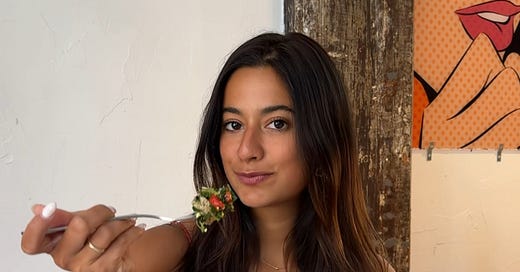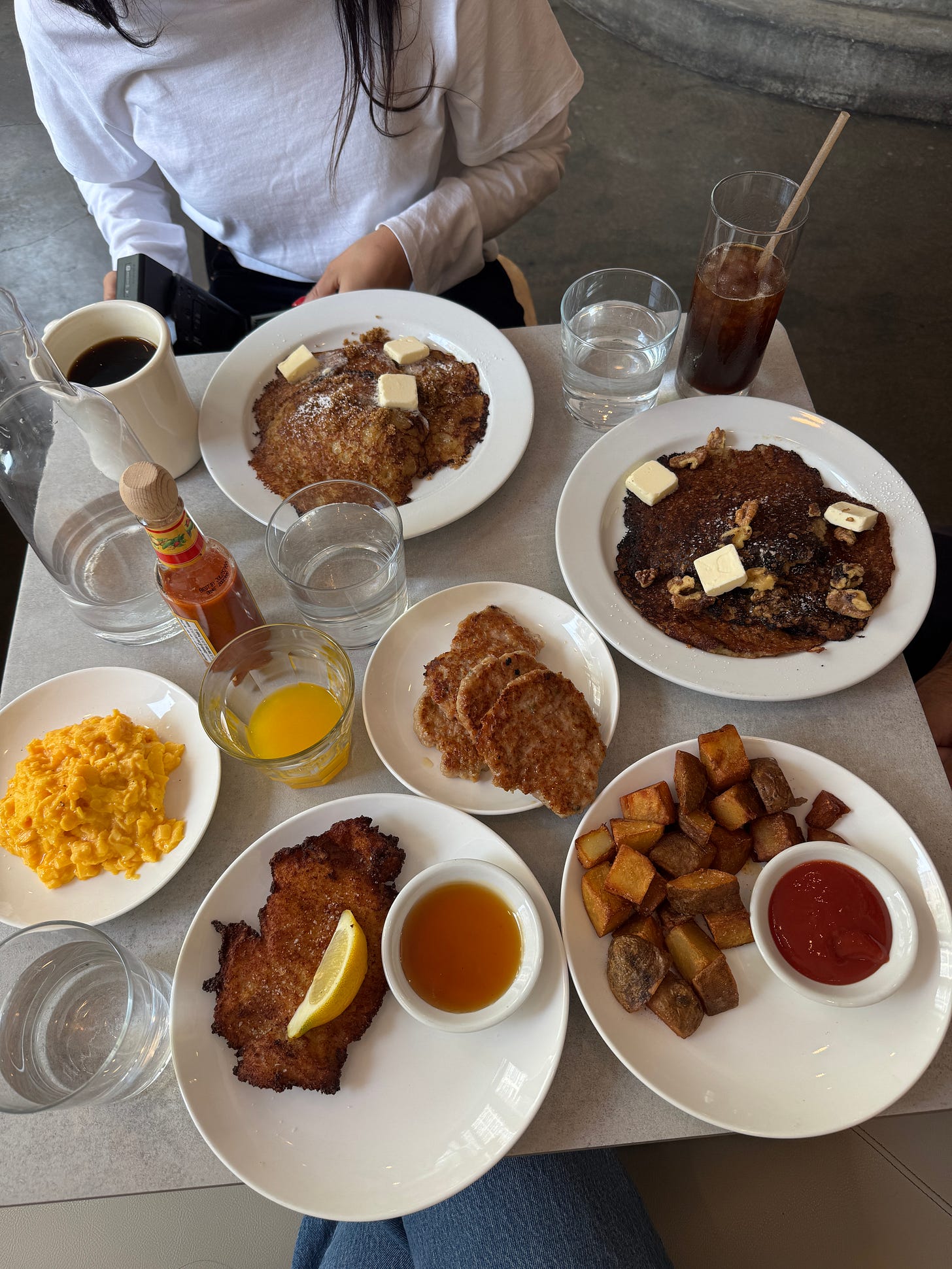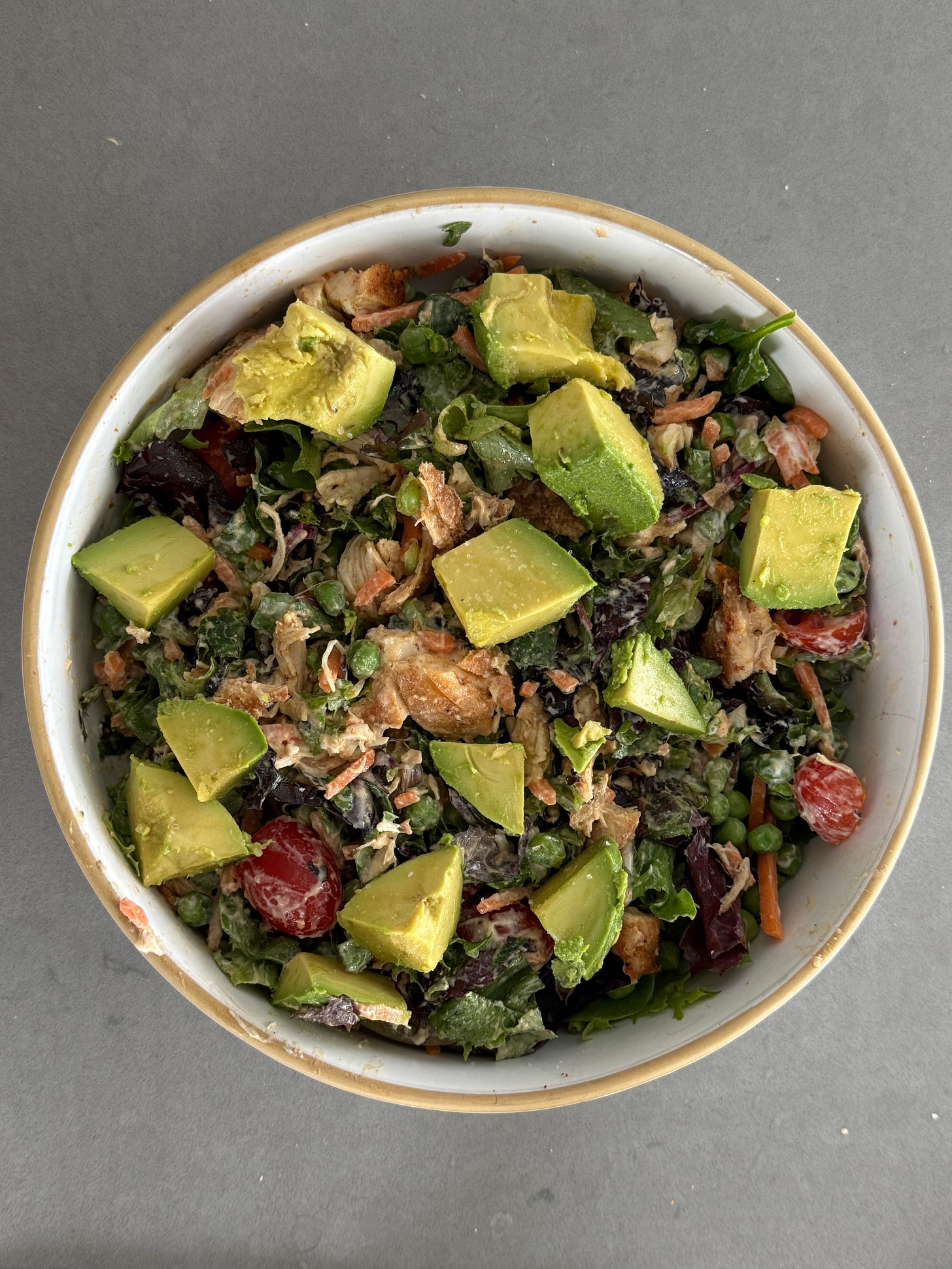How I Healed My Relationship With Food (And Found Freedom in the Process)
8 shifts that helped me ditch the guilt and eat with joy again!
My relationship with food hasn’t always been easy.
For years, I saw food as something to control, to fear, to earn.
It wasn’t just what I ate, but how I thought about it that kept me stuck in cycles of guilt, restriction, and shame.
Healing that relationship has been one of the most powerful parts of my inner growth journey and it’s also become one of my biggest passions: helping others find peace with food too.
So here are 8 things that helped me change the way I eat, think, and care for my body. If you're on your own journey to food freedom, I hope these tips give you a place to start.
1. See food as fuel, not the enemy.
Food gives you energy, and it should be seen as that. Because of this, I choose to eat regular, balanced meals throughout the day, incorporating carbs, protein, healthy fats, and fiber. I want to have energy, live my best life, and show up fully for the things I love.
To do that, I need nourishment, and so do you. Seeing food as fuel can empower you to make better nutrition choices because you understand that you’re giving your body what it needs.
Your body does so much for you. It allows you to live, breathe, move, and experience life. It’s truly magical!
By nourishing it properly, you are honoring it.
2. Take morality off the menu.
Let’s stop calling food “good” or “bad”!
How many times have you heard, or said, something like, “Ugh, I was so bad today” or “I shouldn’t eat that, it’s unhealthy”?
This thought process only creates guilt and shame around eating. In the past, when I internalized these labels and saw food in this way, I often felt like a bad person when I ate something I considered “bad.
And truth be told, thinking that way only created negative feelings inside of me and made me feel disconnected from my body.
The way out is to remove these labels. Food is just food. When you take away the judgment, you free yourself from guilt and allow yourself to make choices based on what feels good rather than on fear or restriction.
This shift was one of the first things I worked on in therapy, and it’s something I revisit regularly.
3. Cultivate an abundance mindset around food.
You might have heard the words “lack mindset” and “abundance mindset” before, but have you ever heard about these concepts in the context of eating?
Most of us have lived our whole lives through a lack mindset when it comes to food. Some examples of what this looks like are…
“Last supper mentality”: thinking “I better eat this now because I don’t know the next chance I’ll have at eating this”, which results in overeating or eating too fast and pushing past fullness cues.
Over-restriction/over-indulgence pattern: when you don’t allow yourself to eat all kinds of foods and think of some foods as “off limits”, you might “lose control” when you finally let yourself have them, which perpetuates feelings of guilt and shame.
Instead, start creating an abundance mindset around food and remind yourself that:
Food is always available (you don’t have to eat it all now).
No food is off-limits, so you can eat what you want without urgency.
You can always eat more later, whether it’s leftovers, another meal at home, or something at a restaurant. There is no need to finish everything on your plate if you’re full before that.
Having abundance mindset removes a sense of lack, judgement or urgency from the equation and helps you feel calm around food, because you know there’s nothing to fear.
It allows you to honor your fullness cues and respect your body because you know that you are not missing out on anything by stopping when you are satisfied.
4. Make healthy eating actually enjoyable.
Many people associate healthy eating with bland, boring meals like plain chicken, steamed broccoli, or unsalted rice. But healthy eating doesn’t have to be like that.
To me, it means eating whole, nourishing foods that also taste amazing. It’s about focusing more on what I can ADD IN to make my meals more colorful, more balanced, more nutritious and more enjoyable while also showing up for my health.
Eating healthy doesn’t mean you need to compromise on your happiness, and making healthy food taste good is key to making it sustainable. When you enjoy what you eat, it becomes a natural part of your lifestyle.
That’s why I love sharing my recipes online! To show that nutritious eating can be easy, fun, and delicious. If you’re looking for inspo, I have a recipe archive here on Substack with over 100+ recipes!










